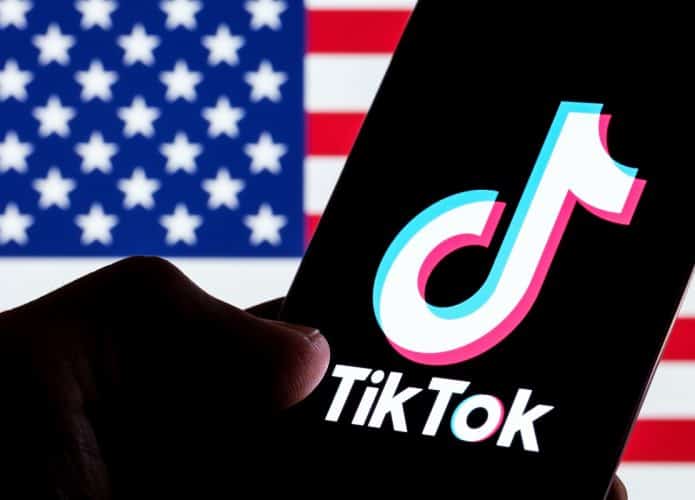Recently, three decisions handed down by constitutional courts point to diametrically opposed paths to the treatment of public policies to address global climate change. (1) The United States Supreme Court (SCOTUS) decided the case, inter alia West Virginia et al. v. Environmental Protection Agency et al. [1] (2) The Federal Supreme Court (STF) decided ADPF 708 [2] On the Contingency of the Federal Government’s Climate Fund. Earlier, (3) the German Constitutional Court ruled that Germany is obliged to improve its performance in order to meet greenhouse gas reduction targets. [GEE] The law, approved in 2019, is not enough to achieve zero GHG emissions by 2050, according to the target, which is included in the country’s international obligations. [3].

The question was raised West Virginia et al. v. Environmental Protection Agency et al. SCUS is not directly related to taking a stand against limiting GHG emissions. A literal reading of the US Constitution, makes clear the intellectual legacy of Antonin Scalia. According to him, the “interpretation” of law (or constitution) leads to constantly changing results, in the American legal system, there is no correct interpretative theory and in essence, precedents are interpreted based on precedents. Convenience of the moment [9].
In Massachusetts et al. V Environmental Protection Agency et al.. 549 US 497 (2007) [10] [11] Required by Massachusetts and other states United States Environmental Protection Agency (USEPA) [12] Regulation of carbon dioxide and other GHG emissions from new vehicles, based on CAA [13] Congress mandated proactive regulation of emissions of air pollutants deemed hazardous to public health and well-being. The claim was denied on the grounds that the CAA did not authorize regulation of GHGs, and even if it did, its decision on the matter was arbitrary. The administrative decision was appealed to the Circuit Court for the District of Columbia and the decision was affirmed.
The case went to Scotus. It won the case for the state of Massachusetts by a 5-4 majority, with the majority opinion delivered by Justice John Paul Stevens. The vote recognized the legality of the state of Massachusetts to sue USEPA for potential damage to the state’s territory due to global warming. Useba’s surprising argument that the CAA did not authorize the company to control CO emissions was also rejected.Two, does not fit the concept of gaseous air polluting agent. It was concluded that USEPA’s delay in regulating CO emissionsTwo It is not justifiable and if USEPA wants to be passive regarding carbon emissions, it should do so based on studies that identify its role in the context of climate change. In other words: no choice.
In West Virginia Debate is raging around the Clean Energy Project [CPP] [14] Established by the Barack Obama administration with the aim of curbing CO emissionsTwo Thermoelectric plants already installed are powered by coal or natural gas. Useba justified the regulation based on section 111 of the CAA 42 USC 7411(d). [padrões de performance para novas fontes fixas]. Although states are responsible for complying with emission standards for fixed sources that have already been established, USEPA determines thresholds to consider when determining the “best emission reduction method.” [BSER]. The Clean Energy Program includes a commitment to thermoelectric plants to improve their emission standards and to transition to renewable energies (wind and solar). Factories can reduce power generation, build or invest in new generation plants, or buy emissions rights in a project cap and trade.
SCOTUS suspended enforcement of the Clean Power Plan, which was later repealed. Then cheap clean energy was created [ACE], equipment and plant operating procedures require upgrading. The District of Columbia Circuit Court ruled that Useba misinterpreted the CAA and disregarded the ACE provisions.
The Supreme Court understood that this included curbing GHG emissions Key Issues Theory [major questions doctrine] [15] Chevron directly confronts the doctrine [16]Accordingly, courts must differ with agencies’ decisions.”Arbitrary and capricious”, with abuse of discretionary power.
According to the conclusion West Virginia, without a clear congressional mandate, Congress did not authorize USEPA to overhaul the U.S. energy mix based on the Clean Power Plan. And yet, according to the Supreme Court’s judgment, the Congress, on several occasions, had already expressed itself against the system. cap and trade In order to reduce emissions. The decision was carried by a 6-3 majority with Justice Roberts voting.
SCOTUS clearly overruled its earlier jurisprudence, established by slim majorities, and limited executive interpretation of powers granted to agencies by Congress; The impact on the fight against global climate change is enormous, including the jurisprudence of other countries. The United States Congress – which has not ratified any international agreement on climate change – is unlikely to pass legislation on climate change mitigation and energy transition in the near future. US goals in the Paris Agreement would be greatly compromised by the decision. West Virginia,
[2] The STF banned the contingency of revenue that would constitute the National Climate Change Fund (Climate Fund) and directed the central government to take steps necessary for its functioning, thereby allocating resources. The STF recognized the union’s boycott as the funds were not fully allocated from the 2019 fund.
[15] Maintains the “principal questions theory”. Courts should not defer to agencies’ legal interpretations when dealing with issues of “broad economic or political importance.” The Supreme Court justified this limitation with the doctrine of non-representation. According to the Supreme Court, courts should interpret “major” legal issues, not executive authorities.
Legal experts argue that such a reading of the non-representation doctrine would wrongly take political decisions out of the hands of agency officials appointed by elected leaders and place decisions in the hands of courts without political accountability. Big Questions theory runs counter to the notion that important policy decisions should be decided by Congress. Available at https://opencasebook.org/casebooks/1045-public-institutions-administrative-law-cases-materials/resources/4.2.4.1-major-questions-doctrine/. Accessed on 7/5/2022

“Internet evangelist. Writer. Hardcore alcoholaholic. Tv lover. Extreme reader. Coffee junkie. Falls down a lot.”



:strip_icc()/i.s3.glbimg.com/v1/AUTH_59edd422c0c84a879bd37670ae4f538a/internal_photos/bs/2024/B/z/cQGmlCQ8enEi6a4aMy3A/2024-04-20t192308z-405666584-rc2ja7aop8ei-rtrmadp-3-usa-congress-ukraine.jpg)

More Stories
TikTok ban in US filed in Senate
Startup promises to speed up US visas with AI
Rwanda – UK Approves Law to Deport Migrants to Prime Time Zone